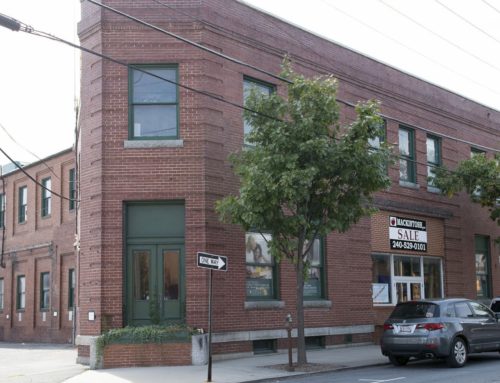Excerpt from Capital Gazette:
The Maryland Court of Appeals has upheld a lower court ruling that the owner of a historic building in Annapolis should have sought city approval before replacing wood windows with vinyl ones.
The March 27 opinion is the latest decision in a dispute between the City of Annapolis and Spaw LLC, which owns the apartment building on Maryland Avenue. Spaw has 30 days to comply with the court order.
“Accordingly, this court affirms the Circuit Court’s order requiring Spaw to revert back to the original process and to submit an after-the-fact application for a certificate of approval for the wood windows that were replaced without prior approval by the commission,” the court wrote in its opinion.
The Cooper Apartments building at 2 Maryland Ave., owned by Spaw LLC, lists Ronald B. Hollander as its resident agent. Hollander was the owner of the property in 1977, with ownership conveyed to Rochelle Hollander in February of that year. Spaw LLC was formed the same year and ownership of the property was conveyed in September 2007.
The case dates back to 2012, when city inspectors noticed the vinyl windows during an inspection of the building. They reported this to the city Historic Preservation Division.
That agency and the Historic Preservation Commission are in charge of preserving the city’s historic structures, a process that includes working with homeowners who need to make exterior repairs and changes to a property.
These changes often require a certificate of approval, which can be granted administratively without a public hearing or given by the Historic Preservation Commission after a public hearing. The approval process is based on the type and scope of the changes the property owner wishes to make.
The building, at the corner of Maryland Avenue and Hanover Street just outside the Naval Academy wall, was erected in 1929 by the Cooper Apartment Corp., according to a survey published by the Maryland Historic Trust. It is considered a Colonial Revival-style structure.
Because the commission hadn’t granted a certificate for the changes, Spaw was cited twice, for replacing wood with vinyl and for removing and replacing windows, in both instances without a certificate.
Spaw fought those citations in court, leading to almost five years of trials across District and Circuit courts and ultimately the Maryland Court of Appeals.
Spaw’s attorney, Jonathan Kagan, argued the city’s citations were vague and barred by the statute of limitations. But Spaw also admitted to replacing “9 or 10” of the wood windows with vinyl, which led to a summary judgment in the city’s favor in Circuit Court.
In light of the opinion, Kagan said his client will follow the court order, but that doesn’t necessarily mean the city will be happy with the application.
The court’s opinion didn’t dictate how many windows Spaw should submit on the certificate of approval, Kagan said.
“Obviously my client is going to follow the order,” he said. “The court isn’t going into the exact number; that issue could lead to another.”
Assistant City Attorney Gary Elson represented the city in the case. He argued that the city was just strictly following its laws governing historic properties.
“This was not about denying an owner of a property in the Historic District the right to perform exterior building changes, but rather about compliance with the law of the city code, which requires an application for a (certificate of approval) … prior to doing exterior building work and a public hearing on the application,” Elson said.
“Spaw unnecessarily exhausted city of Annapolis staff in an effort to avoid an administrative process clearly set forth in the city code.”


